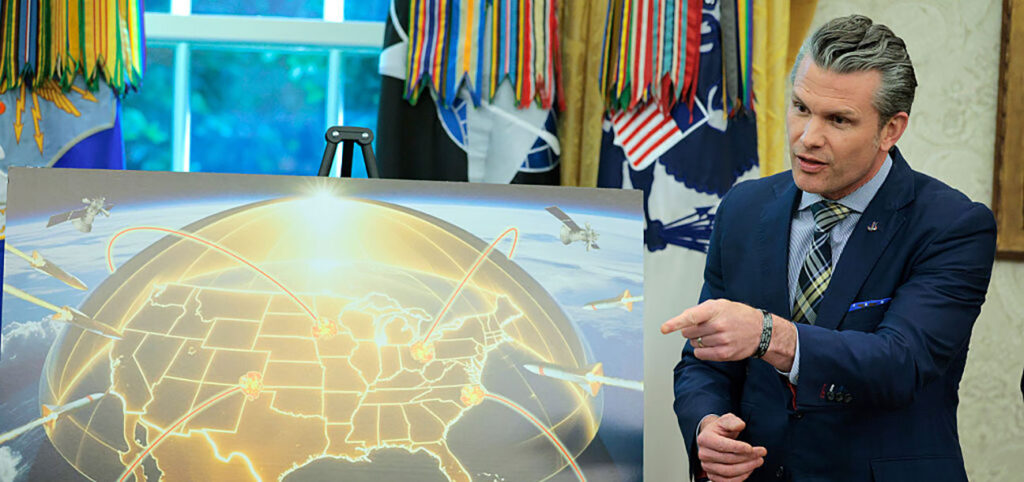Canada wants to join in the development and eventual deployment of the Golden Dome for America missile defense system. The space-based system would integrate with land-based missile defenses to shield North America from attack. U.S. Defense Secretary Pete Hegseth addressed reporters in the Oval Office about the project on May 16, 2025. AFP/GETTY IMAGES
THE WATCH STAFF
Canadian Prime Minister Mark Carney confirmed in May 2025 that his government has discussed with United States counterparts the possibility of extending the planned Golden Dome for America missile defense system to cover Canada. Carney said it would make sense for Canada to participate in the development and deployment of the Golden Dome, which the U.S. plans to debut by 2029. Carney said he would further discuss project details with the U.S., including Canada’s financial contribution to the estimated $175 billion outlay.
The U.S. government announced in May that it had developed a plan to build a space-based missile defense system that will integrate land-based anti-missile defense launchers and sensors and create a centralized threat assessment and response under a unified operational command. President Donald Trump has requested $25 billion for initial costs. At a May 20 news conference, Trump said he had spoken to Canadian officials about the system, and he thought it made sense to extend the dome’s protective shield to include the U.S.’s northern neighbor. Trump said the two governments will work out how much Canada will contribute. Carney, speaking to reporters in Ottawa on May 21, said the idea is a no-brainer. “Is it a good idea for Canada? Yes, it is a good to have protections in place for Canadians,” Carney said, according to The Associated Press.
Canada faces potential missiles threats in the “not-too-distant future” that could come from space, Carney said, according to the AP. “Is Canada going to be doing this alone or with the United States?” he asked.
Canada and the U.S. operate the world’s only binational military command, the North American Aerospace Defense Command, jointly founded in 1957 to defend North America from missile attack. The two nations have worked closely on missile defense for decades. Canada, in recent years, has committed significant military investments in Arctic sensors along with other domain awareness measures to modernize and maintain its NORAD capabilities. Carney said the country’s decision about joining the Golden Dome was a military one, making the distinction between Canada’s military and political relationships with the U.S, reported The National Post, a Canadian newspaper.
Beth Fischer, a professor at the University of Toronto’s Woodsworth College who writes about U.S. defense policy, told the CBC, Canada’s national broadcaster, that joining the Golden Dome would help protect Canadian space assets like satellites and improve domain awareness and security in the Arctic. Fischer noted that Canada opted out of an earlier U.S. missile defense program, the Strategic Defense Initiative, in the 1980s, adding that many more details need to be ironed out between the two countries.

